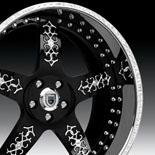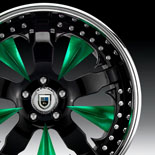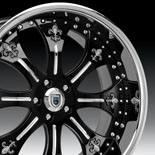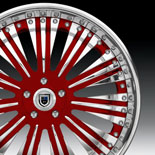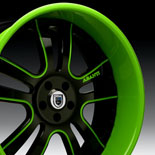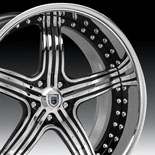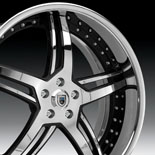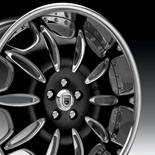Wheels
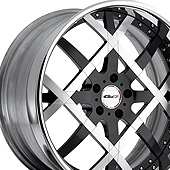 Automobile wheel is an integral component of each contemporary automobile. The basic idea of each car, truck or SUV is to transport the passengers from point A to point B by means of moving along a road. The task of an auto wheel is to move a vehicle on a road and to change the direction of the movement. Each modern vehicle has two pairs of wheels: front and rear. Depending on where a vehicle's engine and drive wheels are found, the automobile layout can be divided into following categories: front-, rear- and four-wheel drive.
Automobile wheel is an integral component of each contemporary automobile. The basic idea of each car, truck or SUV is to transport the passengers from point A to point B by means of moving along a road. The task of an auto wheel is to move a vehicle on a road and to change the direction of the movement. Each modern vehicle has two pairs of wheels: front and rear. Depending on where a vehicle's engine and drive wheels are found, the automobile layout can be divided into following categories: front-, rear- and four-wheel drive.
A rim is a necessary part of every automobile wheel. Depending on the material, used in wheel rim production, there are several most common rim's types available in the contemporary automobile market:
- Steel wheel rim. It is a standard type of a rim. Due to its properties, steel is one of the most important engineering and construction material. Steel features great formability, impermeability and durability. Its notch-toughness makes it possible to resist cracks that may lead to sudden collapse of a product structure. Steel is a cost-effective material as it is less exotic material and its manufacturing process is not so complicated. This type of wheels are usually easy to repair. Compared to other materials, one of the main disadvantages of steel is its heavy weight.
- Alloy wheel rim. This automobile part is manufactured from an alloy of magnesium or aluminum. One of the main benefits is the lightweight that results in better handling and reduction of unsprung weight. When installed on a vehicle, alloy wheels reduce the overall weight that in its turn lead to fuel saving. Compared to steel wheels, alloy rims provide better heat conduction. This improves braking performance as the heat is dissipated from the vehicle's brakes. It also reduce a possibility of overheating. The disadvantage of the alloy rims includes inability to withstand corrosion. It is necessary to apply a paint layer or another coatings to prevent rust. Higher price is another disadvantage of this material. Alloy wheels are also difficult to repair. Unlike steel wheels that are mostly popular among devotees of vintage appearance, alloy rims are commonly used as they are available in dozens of styles and may add stylish accent to vehicle exterior.
- Carbon fiber wheel rim. Compared to alloy and steel wheels, this type of rims is less popular as its major disadvantage is high price. This material is widely used in high-end automobile racing. Carbon fiber wheels are available as the automotive aftermarket add-ons. They benefit in terms of attractive appearance and high-end performance. Carbon fiber composites have high strength-to-weight ratio. The material pros include toughness, resilience and great fatigue strength. Due to its advantages, carbon-fiber-reinforced polymer is used in manufacturing of supercars. Along with the reduced fuel consumption and longer service life, this type of wheels benefits to performance as well as handling.
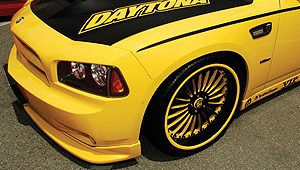
Every automotive wheel consists of a rim, disk and tire. A wheel manufacturing is a complex work that integrates a various production technologies and equipment. Depending on the wheel structure and applied materials, the following types of wheel production are used:
- forging is a manufacturing process by which metal is heated up to the required temperature, placed in a certain die and then the compressive force is applied. Forging improves the physical properties of the metal and refines its grain structure. This results in the increased strength of a wheel. This manufacturing process eliminates the porosity and voids that may cause the corrosion and cracks. The pros include the limited variation of shapes and high production costs due to the complex manufacturing technology that lead to the increased price of the product.
- Casting is a solidification process. Molten aluminum is poured into a mold, which contains a cavity of the required shape and then the process of the solidification takes place. Casting has the advantage of allowing to implement various ideas in terms of style. Until recently, gravity casting was widely used by the wheel manufacturers. At present this technology is replaced by low pressure die casting. This technique is aimed at reducing porosity, which is among the main disadvantages of casting.
In terms of construction, a wheel rim is made as a one-, two- and three-piece auto part. Each type has its place in today's automobile market. Most alloy wheels are constructed as one-piece product. For this type the name speaks for itself. A wheel is made in a mold as a single piece. This type of rims is widely used due to its affordability and strength of the structure. Unfortunately, these wheels are hard to repair. In case of damage, the most reliable variant is to replace it with another one. One-piece rims are available with less options compared to multi-piece wheels.
As for two-pieces rim, the wheel is manufactured of center and outer barrel. Then these separate parts are welded or bolted together. This type of wheels has more options in sizes. This is possible owning to the separated parts. This also benefits to repair. There is no necessity to replace the whole wheel in case one of its parts is damaged. A lot of custom options are available for this type. The main disadvantage is the assembling process. In case a wheel is assembled improperly it can leak air.
When an inside rim half, outside rim half and center are joined using the top-notch fasteners, this type is called a three-piece rim. This type is subject to customization. Three-piece wheels are offered in a great variety of sizes and offsets. Custom paint, chrome plating and powder coat are most common types of finishes available for wheels. Three-piece rim has nearly the same drawbacks as a two-piece wheel: air leakage when not assembled correctly and high price.

